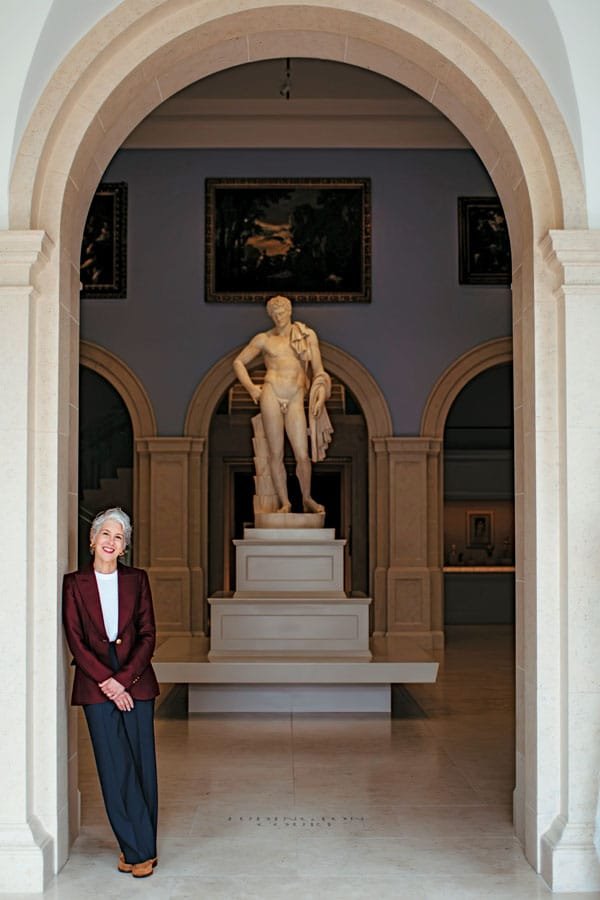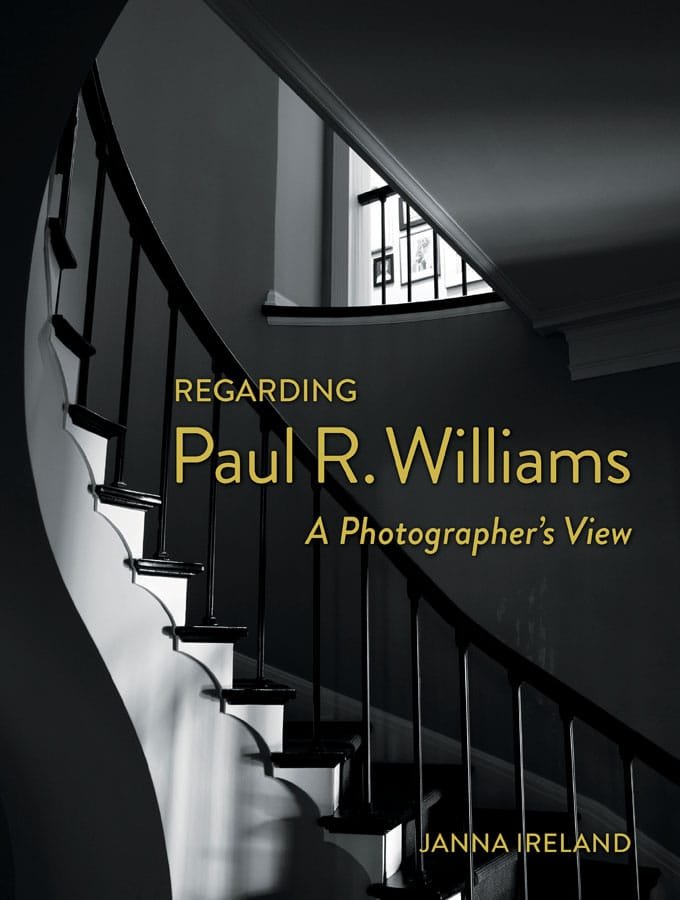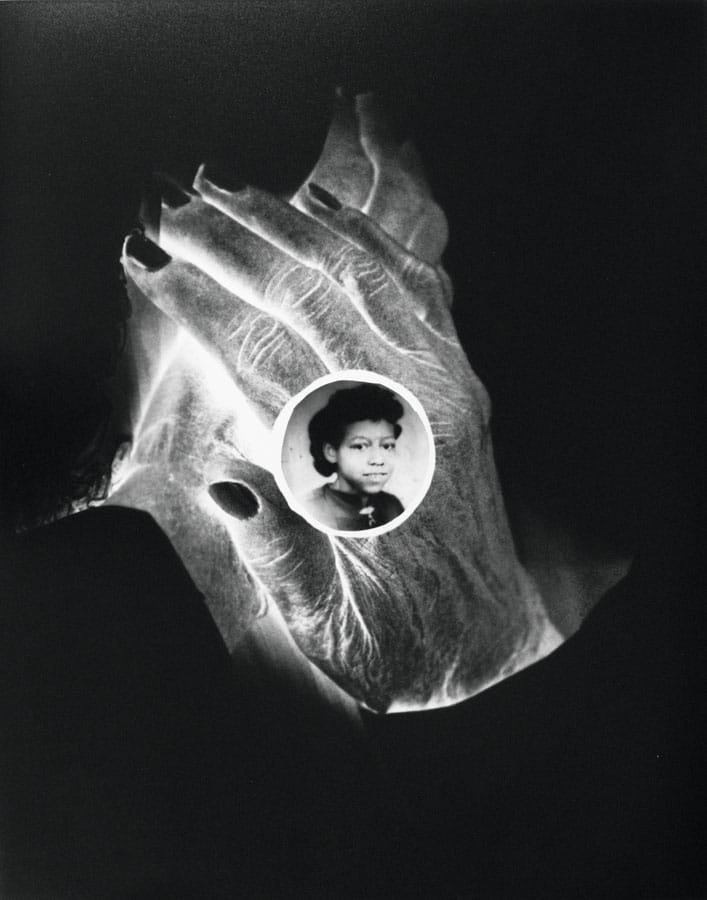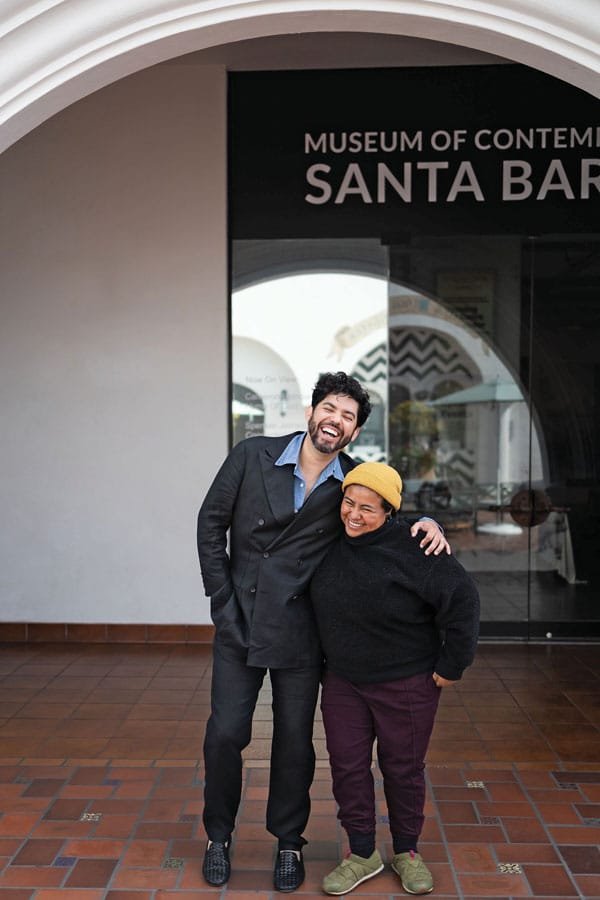Cruz in Control
Written by Lorie Dewhirst Porter | Photography by Sara Prince
During its 82-year existence, 11 directors have led the SANTA BARBARA MUSEUM OF ART (SBMA). Only one of these individuals was female: Ala Story, whose tenure ended in 1957. Now, nearly seven decades later, Amada Cruz has been selected as SBMA’s Eichholz Foundation Director.
This is not to say the museum has ignored women. Mercedes Eichholz and Leslie Ridley-Tree, two formidable Santa Barbara philanthropists, each chaired the organization’s board of directors. And the Women’s Board, the museum’s wildly successful fund-raising group, has significantly shaped SBMA since 1951. But Cruz’s appointment signals a different era, as a new generation of women steps into high-profile leadership roles at several key Santa Barbara cultural institutions.
Cruz was nine months old when her family emigrated to the United States from her birthplace, Havana, Cuba. After graduating from New York University with a fine arts/political science degree, Cruz began her art-world ascent as a curator, with stints at the Smithsonian’s Hirshhorn Museum and Chicago’s Museum of Contemporary Art. Early on she was strongly encouraged to apply for directorship positions, and she has followed that path for much of her 30-year career. Cruz ran a renowned art residency program (Artpace in Texas), directed Bard College’s Center for Curatorial Studies Museum in New York, and was director of the Phoenix Art Museum. Most recently, Cruz served as executive director of the Seattle Art Museum.
Compared with the Seattle institution, which has three large venues hosting nearly a million visitors per year, SBMA is intimate, attracting 150,000 annual guests. But the size disparity is what attracted Cruz to Santa Barbara. “I can actually get my arms around this place,” she says. “At this point in my career, I want something a little more manageable. I also want to think about communities and making connections, more than taking care of facilities. I’d like to focus more on mission.”
For Cruz, SBMA’s mission statement is critical. “It is the North Star for everything the museum does,” she says. “I am very attracted to the mission statement, which is very simple in many ways but very important to think about: ‘integrating art into the lives of people.’ That means the museum is not an ivory tower; that means that everyone here believes that art can have an effect on people’s lives.”
Given the reality that museums must compete to stay relevant in a world of virtual entertainment, Cruz knows this mission is no small task. But she has considered what an ideal museum could be. “A place that really provides meaning for people. A place that has connections to a lot of communities, so people come and they feel like it’s their museum,” Cruz says, adding, “I think that really the only future for museums to survive is for people to actually feel they have ownership. People want to see themselves in museums. That is very important to keep in mind.” 1130 State St., Santa Barbara, 805-963-4364, SBMA.net.





